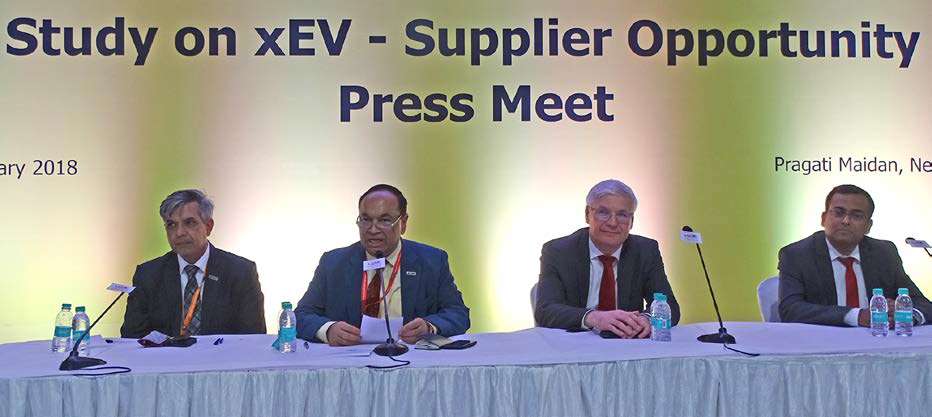ACMA, in association with Roland Berger, has released a ‘Study on xEV market and opportunities for xEV component suppliers’ to bring clarity and solidify its perspectives on the disruptive changes happening within the $43 billion component industry, 50 per cent of the turnover of which comes from Internal Combustion Engine (ICE) aggregates. Said Mr. Vinnie Mehta, Director-General, ACMA: “Apart from the domestic demands, exports from our industry constitutes for over $11 billion, of which 30 per cent revenue is sourced from powertrain related components. Thus, our preparedness for the upcoming challenges is key to sustainability.”

Dr. Wilfried G. Aulbur of Roland Berger presented the study in detail, analyzing the market size and growth prospects of electric and hybrid vehicles in India in the upcoming years, status-quo of the components industry and its adaptation to the new demands, role of government in facilitating the transition, and OEM-supplier strategies in embracing new technology ecosystem.
Commenting on the discussions, Mr. Nirmal K. Minda, ACMA President, said that any disruption of large scale is likely to take some time and may not happen all of a sudden. “Lack of volumes is a persistent challenge in our industry even in the ICE age. As far as EVs are concerned, unless volumes go up, localization may not happen. But with increased demand, Indian players can supply new products at competitive prices, although battery cell manufacturing may still lag behind”, he shared. He also assured that ACMA will play a supportive role in aiding its member in this transition.
Mr. Mehta observed that there will still be a large room for conventional vehicles and ICE related products. He also stressed on the importance of a basket of technologies in pursuit of emission-free mobility, as ‘the industry should cater to what the end user wants’.
KEY POINTS FROM THE STUDY
- Core xEV components expected to account for >50% of the auto components markets in 2025.
- Significant cost reductions of 30-35% are expected in batteries by 2025.
- Government push along with improving TCO approach has widened the possibilities for India in adopting to xEVs.
- Traditional powertrain component makers must act now, or else risk losing the opportunity to Chinese OEMs and suppliers.
- High potential in assemblies of e-motors, thermal management, connectors and power electronics.
- Suppliers need to acquire technology inorganically, reach to global markets swiftly and demonstrate capabilities to OEMs.
- Government needs to define xEV targets and long-term plans that are coherent and consistent to support industry.